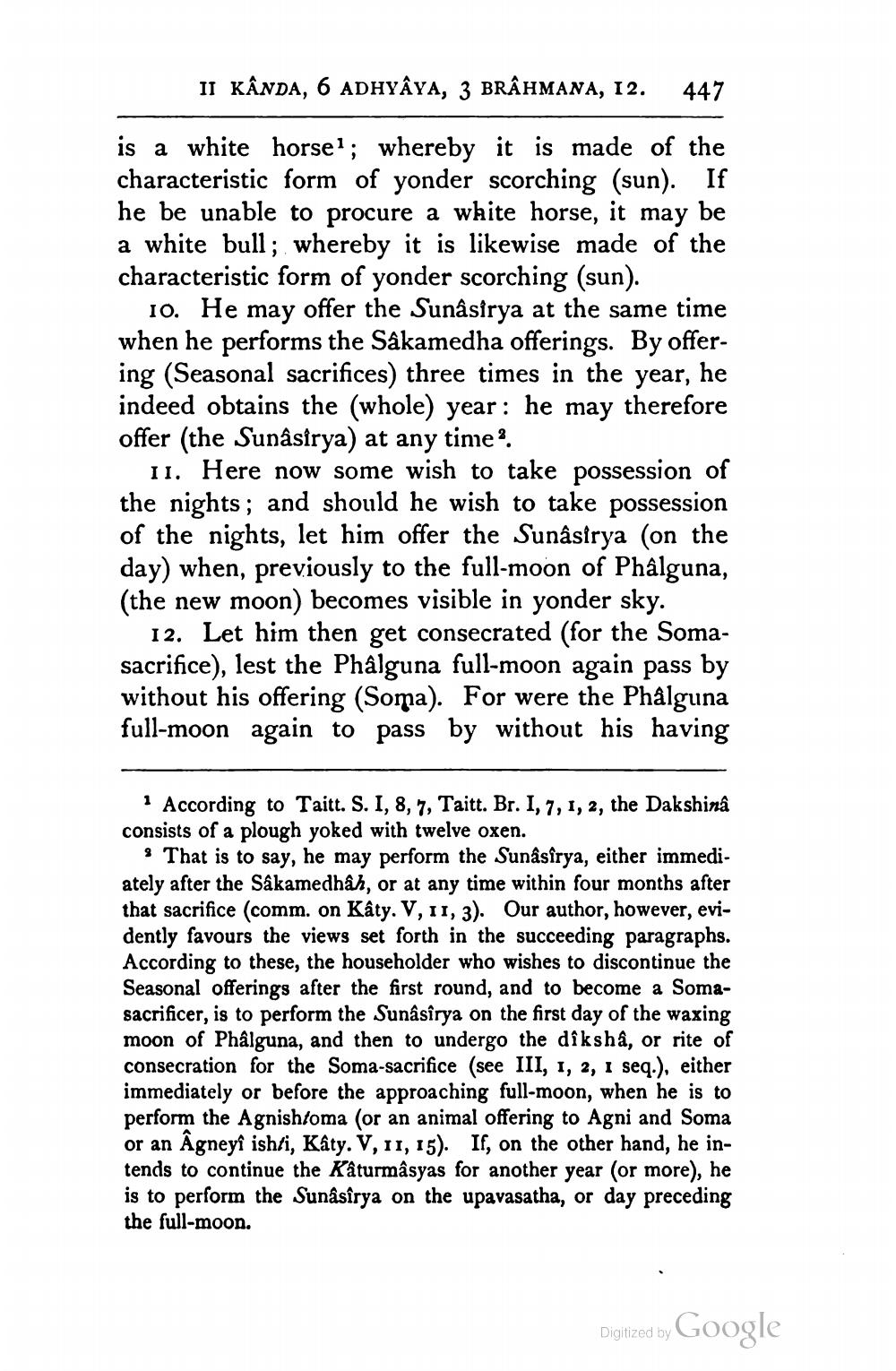________________
II KÂNDA, 6 ADHYÂYA, 3 BRÂHMANA, 12.
447
is a white horse'; whereby it is made of the characteristic form of yonder scorching (sun). If he be unable to procure a white horse, it may be a white bull; whereby it is likewise made of the characteristic form of yonder scorching (sun).
10. He may offer the Sunâsirya at the same time when he performs the Sâkamedha offerings. By offering (Seasonal sacrifices) three times in the year, he indeed obtains the (whole) year: he may therefore offer (the Sunâsirya) at any time.
11. Here now some wish to take possession of the nights; and should he wish to take possession of the nights, let him offer the Sunâsirya (on the day) when, previously to the full-moon of Phâlguna, (the new moon) becomes visible in yonder sky.
12. Let him then get consecrated (for the Somasacrifice), lest the Phålguna full-moon again pass by without his offering (Soma). For were the Phålguna full-moon again to pass by without his having
According to Taitt. S. I, 8, 7, Taitt. Br. 1, 7, 1, 2, the Dakshina consists of a plough yoked with twelve oxen.
That is to say, he may perform the Sunâsîrya, either immediately after the Sakamedhåh, or at any time within four months after that sacrifice (comm. on Kâty. V, 11, 3). Our author, however, evidently favours the views set forth in the succeeding paragraphs. According to these, the householder who wishes to discontinue the Seasonal offerings after the first round, and to become a Somasacrificer, is to perform the Sunâsîrya on the first day of the waxing moon of Phâlguna, and then to undergo the dîkshâ, or rite of consecration for the Soma-sacrifice (see III, 1, 2, I seq.), either immediately or before the approaching full-moon, when he is to perform the Agnishtoma (or an animal offering to Agni and Soma or an Âgneyî ishti, Katy. V, 11, 15). If, on the other hand, he intends to continue the Kâturmâsyas for another year (or more), he is to perform the Sunâsîrya on the upavasatha, or day preceding the full-moon.
Digitized by Google




